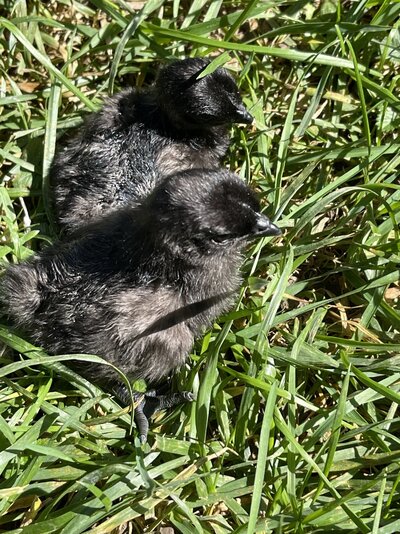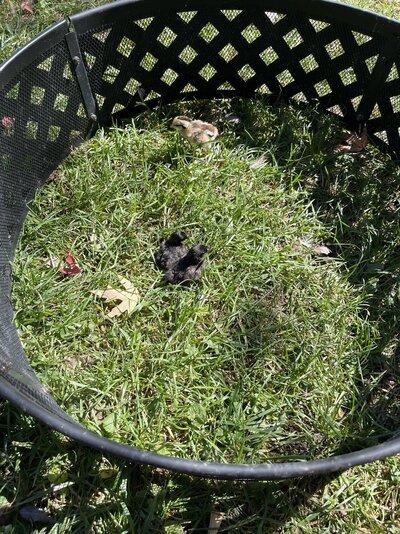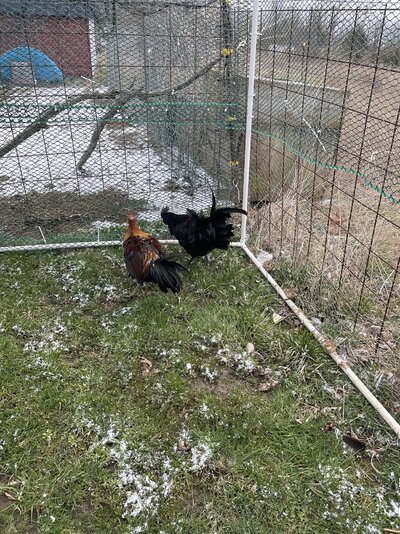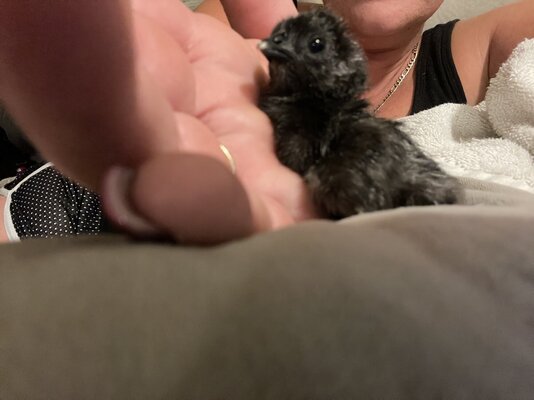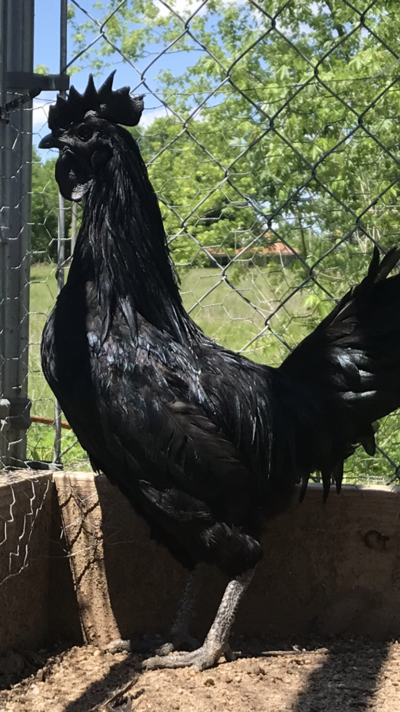It might be that they are just highly Hard feathered. Which is what the breed is in Indonesia. Some breeders over there even say their birds are almost bald until a year old, and feathers can be fragile when it’s a hard feathering. The harder feathering is actually a good sign fibro genes are really good. You might hop on Facebook and talk to a few Indonesian breeders. You might be surprised what you find.... Here in the US a lot of the breeders that imported them crossed them early on to a different breed for egg production and it changed the feathering to be softer. So most birds you see here in US are soft feathered and not the appropriate hard feathering you see in full Indonesian birds. I try to stick to only the purer Indonesian lines myself... try to stay away from the crosses the hatcheries did early on. Best wishes...I have not, but they eat the same food as my other birds, (20%starter/grower + grit and occasional mealworms), and NONE of my other breeds have this issue. They have had feather issues since I got them (one of them had NO feathers on his back and they took a while to grow in. They weren't plucked out, they were simply not there, like they hadn't formed.) I will get some good pics later tonight to show you.
Is there a particular food or food item or nutrient that is good for making strong feathers besides protein and calcium? (They do not currently get supplemental calcium - I only give that to my layers.)
Navigation
Install the app
How to install the app on iOS
Follow along with the video below to see how to install our site as a web app on your home screen.
Note: This feature may not be available in some browsers.
More options
You are using an out of date browser. It may not display this or other websites correctly.
You should upgrade or use an alternative browser.
You should upgrade or use an alternative browser.
The American Cemani Breeders Club...open forum
- Thread starter Steadfast
- Start date
maggiekulasa
In the Brooder
- Mar 26, 2022
- 5
- 42
- 39
I have Ayam Cemani’s and there really great chickens. I hatched them myself. At first for profit, Then fell in love with them and couldn’t let them go.
Attachments
Hi everyone. Here is one of my young Roos. His name is Koba. He is in my Indonesian type project I’ve been working on… trying to get more gamebird appearance and breed for harder feathers more like in Indonesia. He is a grandson of lees lines mixed with Raven Banko lines. Got his dad from Kendra. Best wishes in all your own projects everyone.
I know everyone breeds for their own things they like. I try to stick to a more Indonesian look, hard feathers and taller stance with the deepest black fibro. You can look at our breeding program on our website.
Www.jordanfamilyfarms.com
I know everyone breeds for their own things they like. I try to stick to a more Indonesian look, hard feathers and taller stance with the deepest black fibro. You can look at our breeding program on our website.
Www.jordanfamilyfarms.com
Attachments
Last edited:
raingarden
Crowing
That's a really handsome rooster.
- Dec 10, 2011
- 1
- 0
- 59
Can you explain more to me about the modifiers and how they work?But only a pure Cemani with FM and the GF modifier will have a black tongue. Even then, you are probably going to have to cull probably 90% or more to get that pure black tongue. Don't be fooled by gray tongues. Gray is not black. The same goes for skin. Gray will grow up to be pinkish as the chick matures.
You must start with a perfect Cemani, not a hybrid and then cull 90% to get the black tongue. A perfect Cemani is one that has two copies of the FM gene and the GF modifier. That can only be found in a real Ayam Cemani, Svart Hona, Ogye, etc. And as the chick with gray skin matures, gray will turn to pink and later red.
**Edited by Staff**
Urban_game
In the Brooder
- Apr 1, 2023
- 11
- 16
- 25
Ayam=chicken cemani=thoroughly blackBecause the translation of Ayam Cemani is Total Black Chicken. If it's white, then it's not black.
Chickenosauurs_RexNo54
Songster
Would you consider an Ayam Cemani Putih a real Ayam Cemani?
New posts New threads Active threads
-
Threads with more replies in the last 15 days
-
Open Contest May Madness, a Random Funny Posting Contest
- Started by casportpony
- Replies: 2K
-
What’s the deal with you chicken people??
- Started by z3lda3
- Replies: 805
-
Open Contest 2025 BYC Calendar Photo Contest—We Need Your Pictures!
- Started by casportpony
- Replies: 270
-
-
So..If a Kangaroo and a Ostrich fight..who would win?
- Started by ashyechidna
- Replies: 132
-

